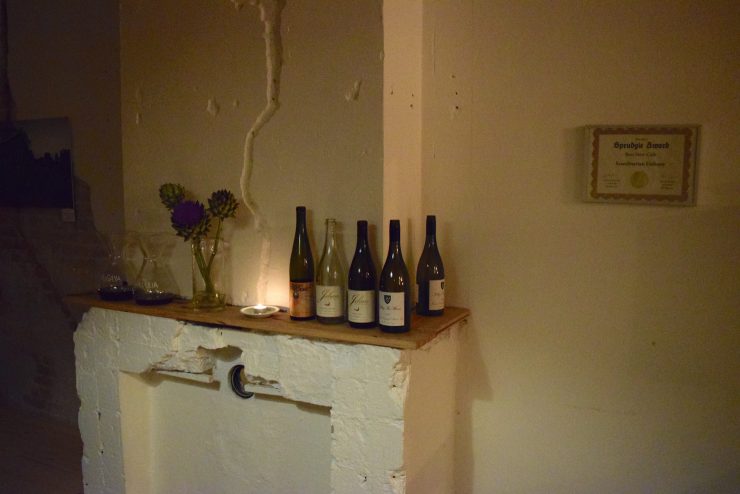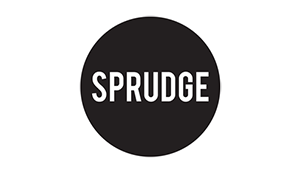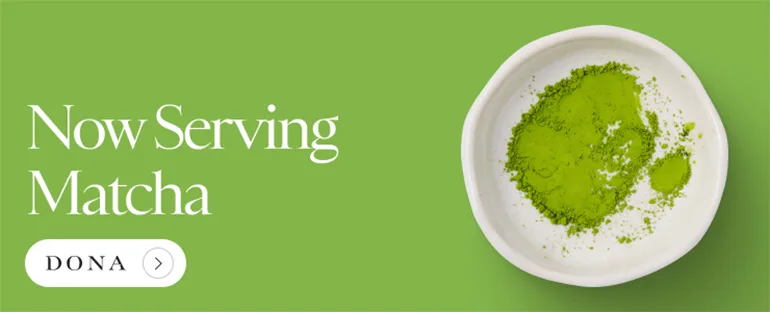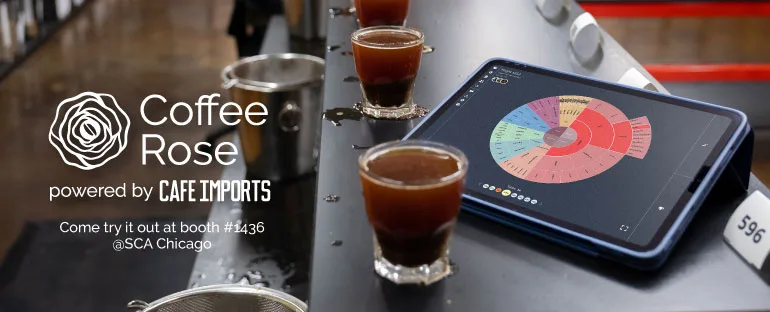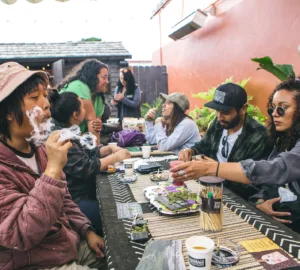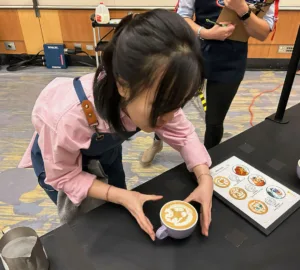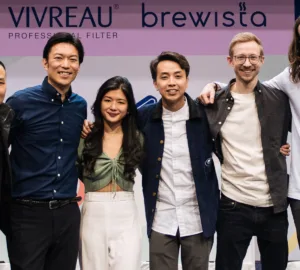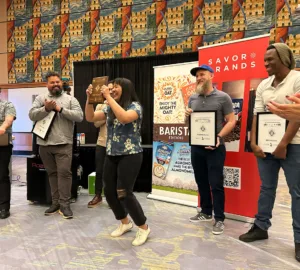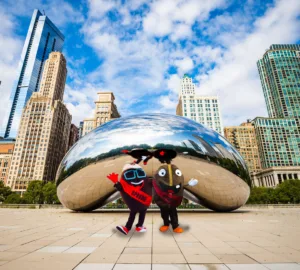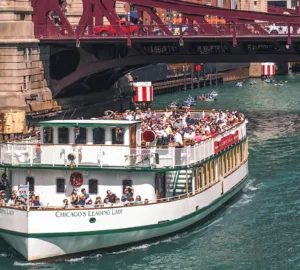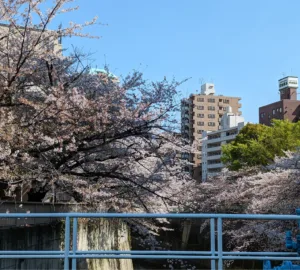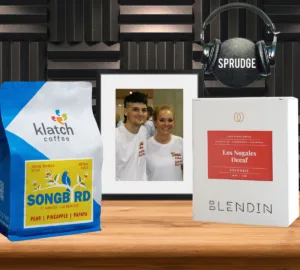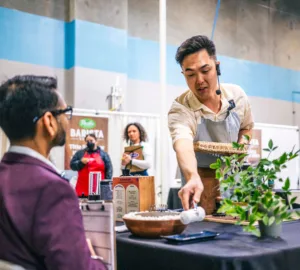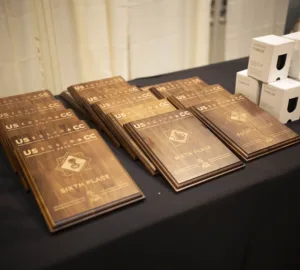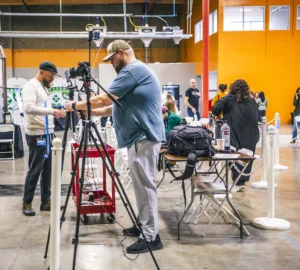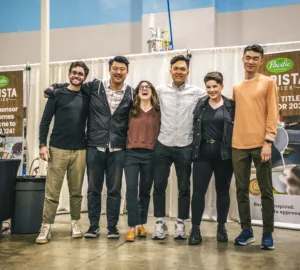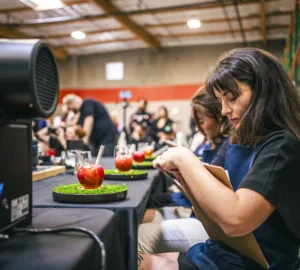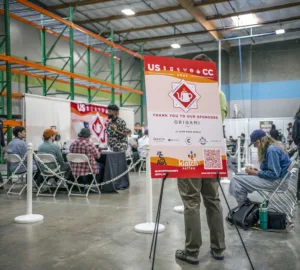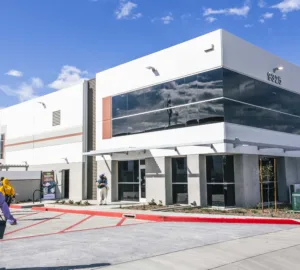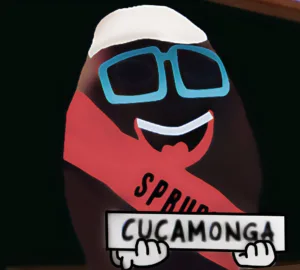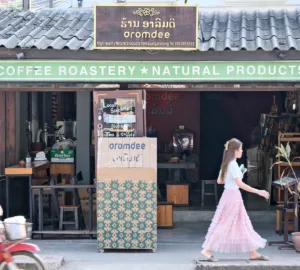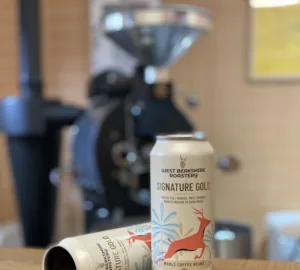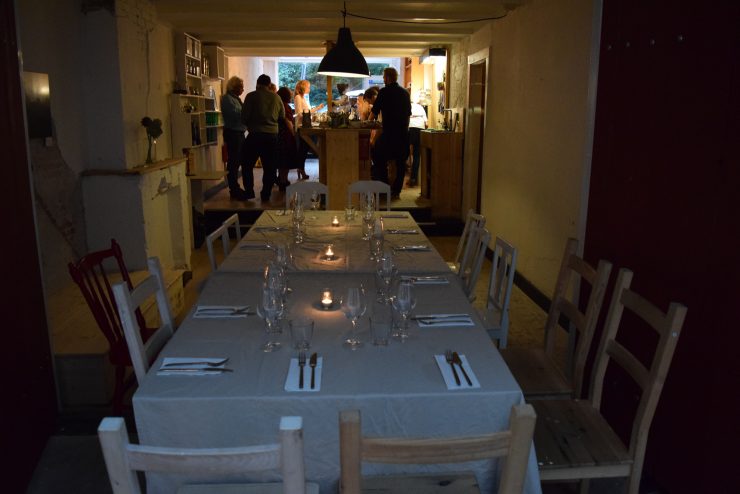
Public coffee consumption in Amsterdam has become a hyphenated affair. From the cafe known for selling retro wallpaper to the new record-store-slash-espresso-bar, and now even a modest neighborhood florist with a La Marzocco in house, the Dutch capital is teeming with hybrid coffee enterprises. But despite all these shiny alloys, this city, unlike some in Australia and the United States, has been slow to host places that thoughtfully prepare coffee and food.
At Scandinavian Embassy, however, this is not the case. In fact, at this cafe you may be given a double-fermented Colombian Castillo with a plate of smoked brown bear sausage and beetroot, no questions asked. (Well, except for whether the animal’s demise was part of the 300 regulated slaughters that Sweden permits for ursine nuisance control. Answer: it was.) And for co-owners Rikard Andersson and Nicolas Castagno, this proved a perfectly sensible pairing at a dinner they recently held.
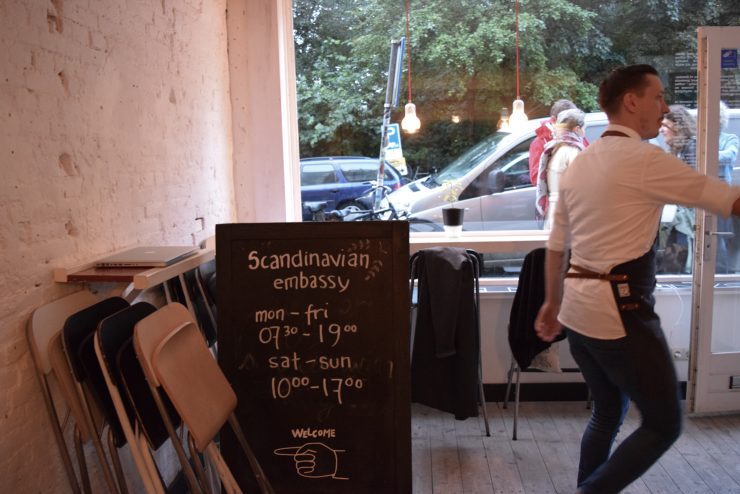
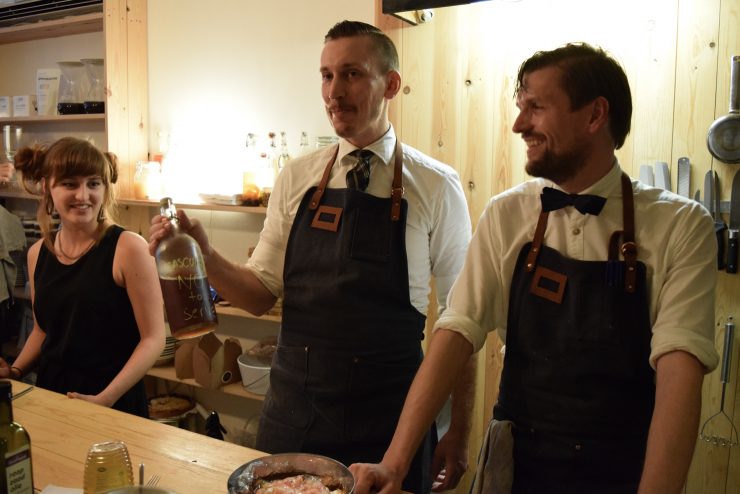
Private dining is not new at Scandinavian Embassy. Since the cafe’s start in late 2013, it has regularly opened after hours to cook à la minute dinners for small parties. The fare tends towards Nordic: seafood, meats from mammals that look cute on a Christmas card, grains that give your digestive system tough love, lingonberries, and liberal smoking and pickling practices. A placard prices four courses at 50 euros and seven courses at 70 euros, though Andersson, the head chef, and Castagno, the coffee maestro, say “that’s very flexible,” depending on head counts and appetites. Dietary restrictions and tastes are honored, too. “We are not Scandinavian fundamentalists,” Castagno, Argentine by origin, has stated in the past.
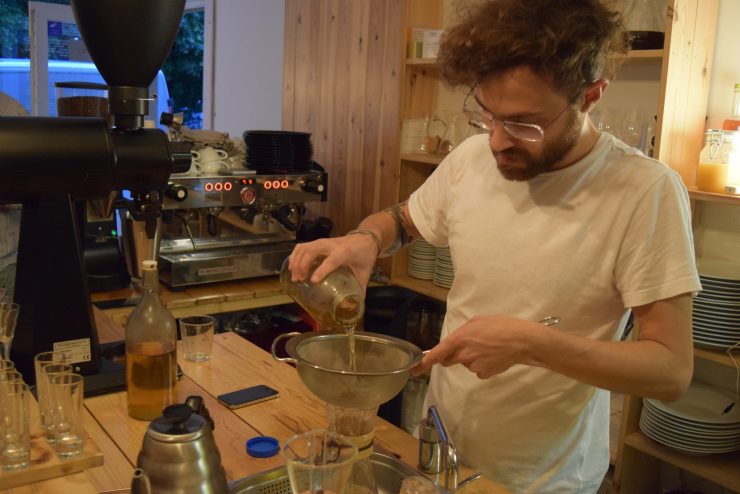
What is new at Scandinavian Embassy is Andersson and Castagno’s demonstration of “not being afraid of using coffee as an ingredient and mixing it with other things.”
“It’s fun to see how we can merge everything,” said Andersson. “We do [coffee and food] every day, but this was taking it as far as we could.” Taking it as far as they could occurred at a private dinner on an unseasonably dank, dark day in early September.
“The idea of that night was to show what’s possible to do with coffee,” Castagno explained. One possibility was explored by cooking dishes that used not just the coffee bean, but its flowers and fruit. Another was by creating a cupping-like setting that encouraged diners to toggle, mid-course, between duos of shot glasses and to determine preferred pairings for themselves.
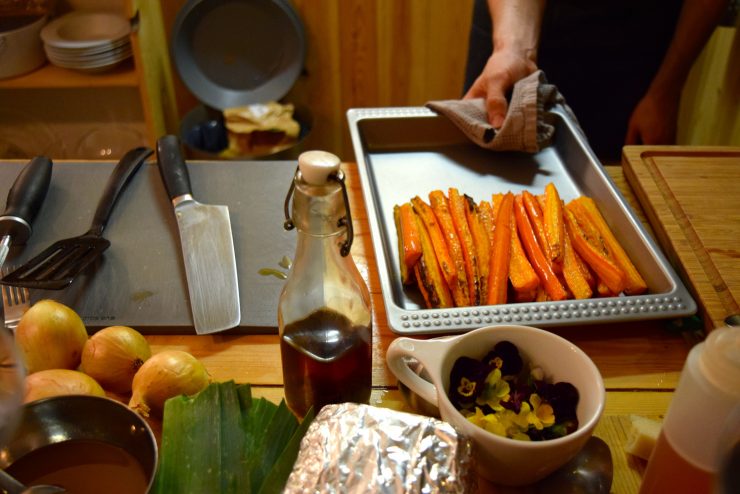
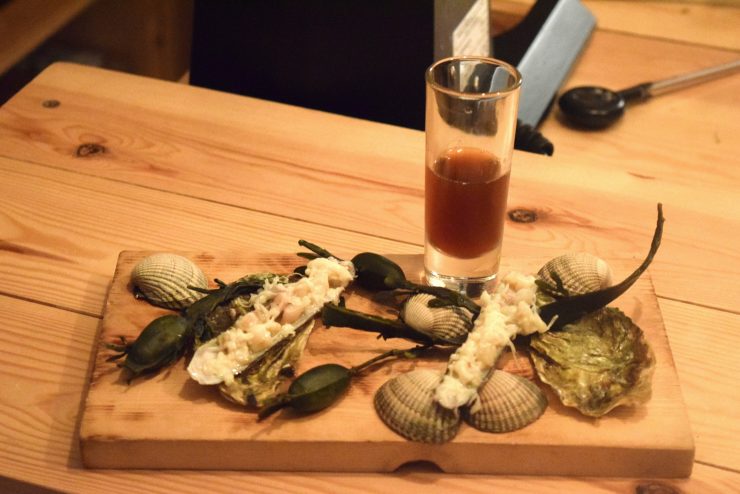
The evening began as any other concoction would at the venue, behind the simple wooden bar. At one end, Castagno, aided by two baristas, seeped and strained, poured and pulled. At the other end, three chefs assisted Andersson in getting maximum use out of minimal cafe equipment. The former banker, who clocked only one year in a professional kitchen before Scandinavian Embassy, has credited much of his know-how to growing up around chefs-in-training, slaughtering his own pigs, and using the “normal tools” in his family’s kitchen. “You don’t have to have a sous vide and an ice cream machine to do cool stuff. You can do it with just a freezer and a cooking kettle,” he said.
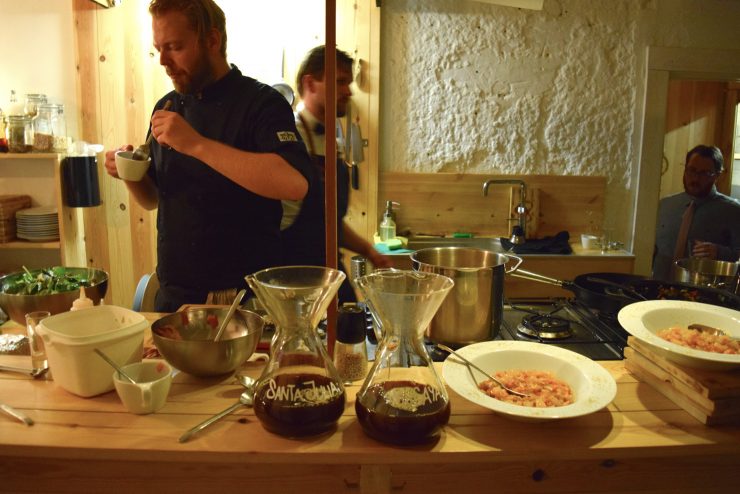
Meanwhile, 13 guests sat on wooden chairs around a casually draped, candle-lit table. The diners were cafe friends, neighbors, and fans, including Sprudge co-founder Jordan Michelman, that week visiting Amsterdam and that night moonlighting as sommelier, pouring rare Oregon wines he toted from Portland, Oregon.
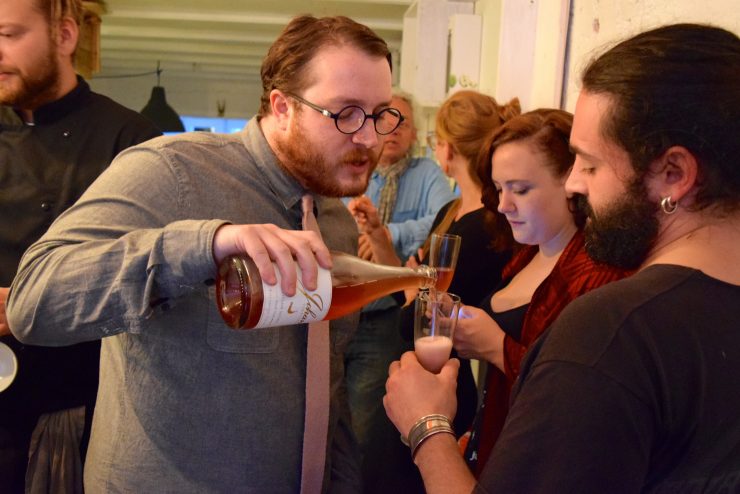
Sometimes the coffee component in a dish was subtle, for example in the fermented coffee flower and water kefir grain bouillon made for scallops served in their shells. Other times it was obvious, such as on the dessert plate, where a khaki-colored crème anglaise matched a marshmallow flavored with Coffee Collective espresso. Of the seven courses, one neither cooked nor served with coffee was monkfish atop shredded Prosecco-poached potatoes. The starchy side was born of a visit to Veneto and Andersson’s frustration “about not having gnocchi in the North” (the evening’s full menu is given below.)
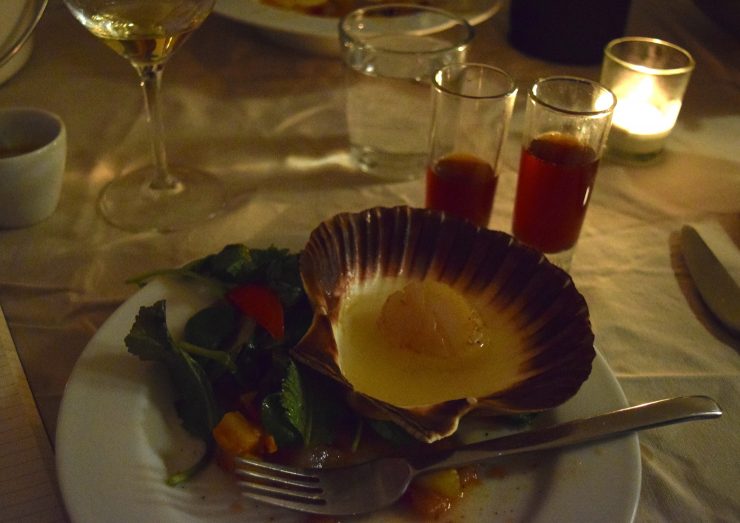
The pairing process required consideration not only of the coffee itself, but its brew methods. As Castagno described it: “Immersion brews provide a much rounder, fuller cup of coffee, but we were also filtering them with a Chemex filter to achieve the clarity of flavor you generally get with pour-overs. We brewed pour-overs on a V60 when we wanted brighter cups with a pronounced acidity.” Most of the coffees were served chilled because Castagno predicted they would go better with the food and wine as such.
Scandinavian Embassy foresees its dinners consisting more and more of coffee-paired dishes, though standardly just one cup per course. Castagno has admitted he is more comfortable with “the spontaneous thing” that goes on at his workplace in daylight than during “dinner situations” with “the manners and all that.” Still, he hinted that a future incarnation of their enterprise could accommodate even more “fine dining.”
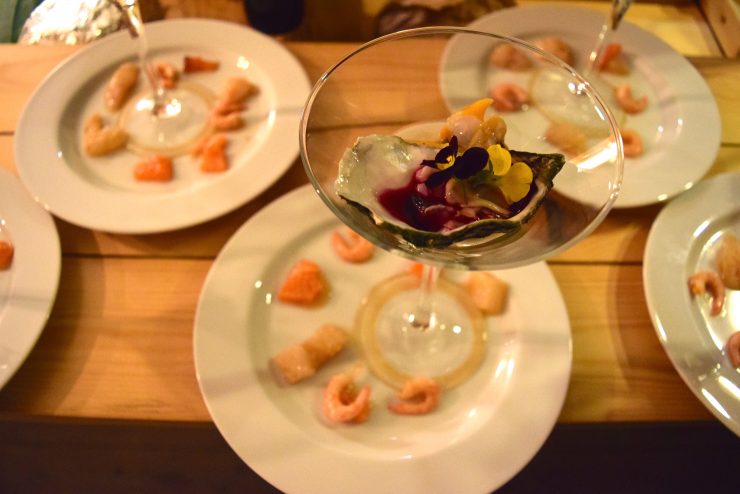
Consistent with Amsterdam’s hybrid business culture, Castagno and Andersson seem determined to achieve a perfect balance in their fika and food offerings. In the meantime, in a back corner of the cafe, the installation of a wardrobe has discretely begun. Scandinavian Embassy is getting ready to launch a long-planned clothing collection. This will officially link a third hyphen to the brand and, if the fashion proves as forward-thinking as all its other output, up the ante for cafes everywhere.
Karina Hof is a freelance journalist based in Amsterdam. Read more Karina Hof on Sprudge.
The Menu by Rikard Andersson & Nicolas Castagno
September 4, 2015
1st course
Oyster with lacto-fermented beetroot juice and freshly steamed-open cockles with lacto-fermented cucumbers in their own juices and garnished with flowers
Paired with chilled Espresso 1 roasted by Coffee Collective
Ceviche-style North Sea shrimp, cured salmon, and fresh Dutch cod, all marinated in cascara kombucha
Paired with cold brew of dried coffee flowers from SL28 trees provided by Graciano Cruz at HiU Coffee
2nd course
Stewed fennel and tomatoes, served family-style with bread
Paired with two coffee immersions to evaluate their tastes vis-à-vis the vinegariness of the vegetables:
1) Santa Julia, Producer Jose Antonio Salaverria. From Apaneca Ilamatepec in Santa Ana, El Salvador. A washed Bourbon and Pacamara (varieties) coffee roasted by Drop Coffee
2) Mugaya from the Mugaya Factory in Kirinyaga, Kenya. A SL28 and 34 AA coffee roasted by Drop Coffee
Butter-fried scallop served in the shell with a bouillon made of a two-day fermentation of coffee flowers with water kefir grains
Paired with V60 pour-overs of:
1) Aricha from Yirgacheffe, Ethiopia, a washed heirloom roasted by Drop Coffee
2) Konga from Yirgacheffe, Ethiopia, a washed heirloom roasted by La Cabra
3rd course
Zeeland razor clams, sautéed in garlic, onion and butter, topped with a gratinated young goat cheese and smoked in a Brazilian coffee called Pinheirinho. Yellow Bourbon, natural processed and roasted by La Cabra
4th course
Pan-seared monkfish served over Prosecco-poached shredded potatoes served al dente
5th course
Smoked bear sausage with lacto-fermented beetroot and topped with an egg yolk
Paired with warm served La Palma y El Tucán from Cundinamarca, Colombia, the variety was Castillo, roasted by La Cabra
6th course
Very rare duck pan-seared in butter and rare beef marinated in salt and coffee (sitting atop the La Marzocco at 58-60 degrees) and then fast-grilled in the oven, served over oven-roasted potatoes, cauliflower, and carrots, with a pencil stripe of a vinaigrette of espresso and browned butter
Paired with cascara kombucha, brewed with Geisha plants’ dried coffee fruits from Panama. Also from Graciano Cruz.
7th course
Norwegian Christmas cookie filled with “troll cream” and single-estate chocolate from Papua New Guinea and blueberry pie, garnished with a marshmallow made from Coffee Collective espresso, coffee crème, and roasted hazelnuts
Paired with cappuccino made from Espresso 1 roasted by Coffee Collective with unpasteurized whole milk from De Dinkelhoeve farm
Oregon Wines:
Johan Vineyards 2014 Pinot Noir Petillant Naturel, sourced from Vinopolis
Tripod Project 2013 “Deep Probe” Riesling, sourced from SE Wine Collective
Johan Vineyards 2012 “Drueskall” Orange Pinot Gris, sourced from Europa Wine Merchant
Kelley Fox Wines 2009 Momtazi Vineyard Pinot Noir, sourced directly from the winemaker (with many thanks to Michael Alberty at Storyteller Wine Company)
